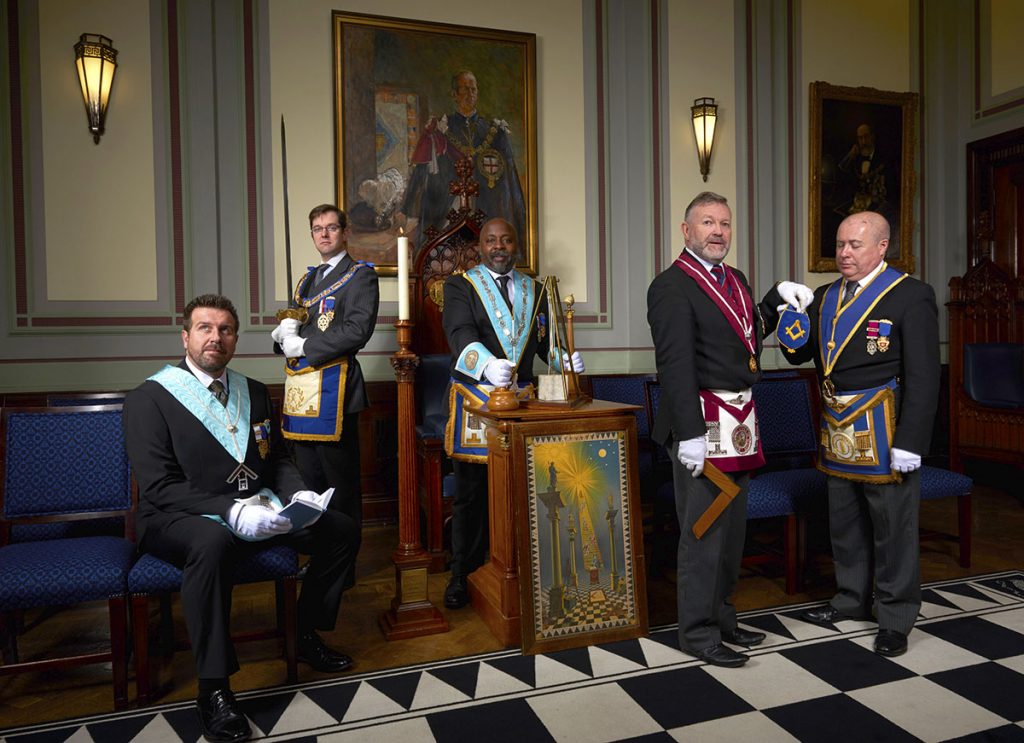Checking Out the Mysteries of the Freemason: What You Need to Know
The Freemason, a term commonly shrouded in intrigue and conflict, stands for an intricate tapestry of historic reality and modern-day misconception. Developed in the late 18th century, this secret culture was originally rooted in the Knowledge's suitables however has actually considering that ended up being associated with conspiracy theories about elite control. As we navigate the origins, key numbers, and the raw comparison between myth and reality, one must take into consideration just how these stories affect contemporary perceptions of power and privacy. What could be exposed with a closer examination of these components can test long-held assumptions about the darkness that remain in our society.
Origins of the Freemason
The origins of the Freemason are soaked in a blend of historic intrigue and ideological eagerness. Established in 1776 in Ingolstadt, Bavaria, by Adam Weishaupt, the team was initially developed as a secret society focused on advertising Enlightenment ideals such as factor, secularism, and the splitting up of church and state. Weishaupt, a teacher of canon law, looked for to challenge the prevailing authority of the church and state, which he considered as oppressive organizations suppressing intellectual and personal flexibility.
The Freemason looked for to recruit prominent participants from numerous societal industries, consisting of national politics, academia, and the arts, to promote a network committed to these Knowledge principles. The society operated under a shroud of privacy, using coded language and rituals to safeguard its participants from mistreatment, especially given the repressive climate of the time. Nonetheless, the Freemason encountered significant opposition from both governmental authorities and religious organizations, which checked out the team as a hazard to their power.
Secret Figures and Members
That were the crucial numbers that shaped the Freemason's early impact and instructions? The Bavarian Freemason, established in 1776 by Adam Weishaupt, emerged as a reaction to the overbearing social structures of the time.
Another substantial number was Johann Gottlieb Fichte, a famous philosopher whose concepts on nationalism and education reverberated with the Freemason's goals. Although Fichte was not an official member, his thoughtful supports influenced the team's ideological background. Additionally, numbers like the writer and theorist Johann Wolfgang von Goethe were linked with the more comprehensive intellectual activities of the time, although their direct involvement with the Freemason continues to be disputed.
These essential numbers added to the Freemason's very early instructions, pushing the limits of political and social thought, while their cumulative efforts intended to challenge well established norms and cultivate a climate of dynamic change in Europe.
Misconceptions vs. Reality
Numerous false impressions surround the Freemason, typically mixing fact with fiction in a method that covers its real nature. The idea that the Freemason continues to put in significant impact over world occasions is a misconception - how to become a freemason.
Another common misconception is that the Freemason consists of a network of elite individuals manipulating worldwide events. Actually, several conspiracy theories exaggerate the group's relevance, connecting misguided motives to societal trends and events. This has caused an oversimplified sight of intricate concerns.

Modern Interpretations
Contemporary interpretations of the Freemason commonly mirror more comprehensive societal anxieties and a fascination with secrecy and power. This modern lens often connects the Freemason with conspiracy theories that suggest a concealed elite manages globe occasions, controling federal governments and economic situations for their very own gain. Such stories use an ingrained wonder about of authority, specifically in times of situation or social turmoil.

Furthermore, some modern interpretations frame the Freemason as an allegory for the intricacies of globalization and the interconnectedness of significant people and companies. This point of view motivates a vital evaluation of how power dynamics run in today's globe, highlighting the equilibrium between transparency and secrecy in administration and company techniques.
Cultural Impact and Legacy
Influenced by centuries of intrigue, the social effect and tradition of the Freemason extend much past its historical origins. This secret culture, established in the late 18th century, has penetrated different facets of popular society, from literature and film to songs and art. The idea of the Freemason has advanced right into a symbol of conspiracy theory concepts, frequently representing a regarded covert power manipulating international events.
In literary works, authors like Dan Brown have woven the Freemason right into elaborate stories, fascinating readers with motifs of secrecy and power. Movies such as "National Treasure" and "The Da Vinci Code" better continue the allure of the culture, blending truth with fiction to create appealing narratives.
The Freemason's impact also prolongs into music, with musicians referencing the organization to stimulate styles of disobedience and societal review. This portrayal has added to a fascination with the concept of clandestine teams controlling the levers of power, mirroring societal anxiousness about authority and openness.
Inevitably, the Freemason's tradition is an intricate tapestry of myth and truth, forming perceptions of secrecy and look at this website control in contemporary discussion. Its long-lasting existence in society underscores humanity's seasonal pursuit for understanding concealed facts.
Conclusion
The exploration of the Freemason discloses a complex interplay in between historic realities and modern myth-making. Established in the Knowledge era, this culture aimed to challenge oppressive structures, yet its heritage has actually been overshadowed by conspiracy theories that suggest elite adjustment. Recognizing the distinctions between the original suitables and contemporary analyses is crucial for comprehending the enduring fascination with the Freemason and its considerable influence on cultural narratives surrounding power and secrecy in society.